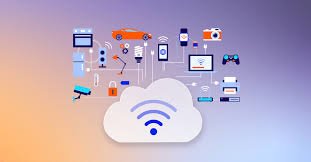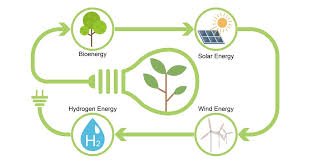Tech Tomorrow: Innovations discount code Shaping Our Future
As we step into a future shaped by technological advancements, our lives are poised to change dramatically. Innovations such as artificial intelligence, renewable energy, and 5G technology are pushing boundaries and making once-distant possibilities a reality. However, keeping up with these advancements can be costly, so we’ll also explore some valuable tips on how to embrace tech smartly while saving money.
1. Artificial Intelligence (AI) and Machine Learning (ML)
Artificial Intelligence and Machine Learning are reshaping the way we work, communicate, and live. From AI-powered smart assistants in our homes to machine learning algorithms optimizing logistics and healthcare, the possibilities are endless.
- Applications on the Horizon: AI will continue to make strides in smart home technology, self-driving vehicles, and personalized healthcare. Imagine having your home lights and thermostat automatically adjust based on your daily routine or a virtual assistant that predicts your needs.
- Price Tip: AI gadgets like Amazon Echo or Google Nest Hub typically start around $50, but more advanced devices, such as AI security cameras, can cost several hundred dollars.
- Saving Tip: Keep an eye on discounts during sales events like Prime Day, Black Friday, or Cyber Monday. Also, consider buying refurbished or open-box models that are often discounted yet function as good as new.

2. Internet of Things (IoT)
The Internet of Things connects everyday devices to the internet, making them smarter and more efficient. From wearable fitness trackers that monitor your health to smart refrigerators that help manage groceries, IoT is integrating seamlessly into our lives.
- Applications on the Horizon: IoT will continue to grow with innovations like connected smart cities that manage energy and reduce traffic congestion. In agriculture, IoT devices will revolutionize farming by monitoring soil conditions and optimizing water usage.
- Price Tip: Basic smart plugs or light bulbs can start at $15, while more complex systems like smart home hubs or connected appliances can range from $200 to over $1,000.
- Saving Tip: Start small by investing in affordable devices that offer high value, like smart plugs. Many utility companies provide rebates for energy-efficient IoT devices. Also, shop for bundled packages to reduce the overall cost if you’re planning a smart home setup.

3. Renewable Energy and Sustainable Tech
With climate change a pressing concern, renewable energy technology is more important than ever. Solar panels, wind turbines, and electric vehicles (EVs) are paving the way for a sustainable future.
- Applications on the Horizon: Innovations in solar technology, like solar windows and advanced battery storage systems, will make renewable energy more accessible and efficient. EVs are becoming more mainstream, and charging infrastructure is expanding rapidly.
- Price Tip: Investing in a solar panel system can cost between $10,000 and $30,000 upfront, but it pays off over time with reduced energy bills. EVs range from $25,000 for budget models to $100,000 for luxury brands.
- Saving Tip: Take advantage of federal and local tax incentives for installing solar panels or buying an EV. Some states also offer rebates, significantly reducing the initial cost. Consider leasing solar panels or EVs as a more budget-friendly alternative to purchasing.

4. 5G Technology
5G technology promises lightning-fast internet speeds, reduced latency, and the ability to connect even more devices at once. This advancement is transforming industries like healthcare, transportation, and entertainment.
- Applications on the Horizon: 5G will enable smoother telehealth consultations, more immersive AR/VR experiences, and efficient autonomous vehicles. It will also power smart factories and cities with real-time data processing.
- Price Tip: Upgrading to a 5G smartphone can cost $100–$300 more than a 4G device, and 5G data plans are usually more expensive.
- Saving Tip: Before jumping to 5G, assess your actual data needs. If 4G still serves your purpose, hold off until prices drop. Carriers often have deals or trade-in offers that make upgrading more affordable, so explore those before purchasing.

5. Augmented Reality (AR) and Virtual Reality (VR)
AR and VR are taking experiences to the next level, transforming fields like education, training, and entertainment. From VR fitness programs to AR applications that provide virtual home tours, these technologies are blurring the lines between real and virtual.
- Applications on the Horizon: AR could transform retail, letting you see how furniture looks in your living room before you buy. VR could advance to provide highly realistic training simulations for surgeons and engineers.
- Price Tip: High-quality VR headsets like the Meta Quest 3 or HTC Vive can range from $300 to $1,000, while AR glasses are still in their early stages and can be quite costly.
- Saving Tip: Watch for bundles that include headsets and games. Platforms like Steam and Oculus often have seasonal sales. Consider purchasing older models or refurbished units to save money without sacrificing performance.

6. Robotics and Automation
Robots are not just a thing of science fiction anymore; they are becoming a reality in our homes and workplaces. From robotic vacuum cleaners to automated factory lines, robots are enhancing productivity and making life easier.
- Applications on the Horizon: Expect to see robotic assistants in elderly care, drones for package delivery, and agriculture robots that automate farming tasks.
- Price Tip: Robotic vacuums range from $150 for basic models to over $1,000 for high-end ones with advanced features. Industrial robots for businesses can be even more expensive.
- Saving Tip: Look for deals during major shopping events and consider buying models from the previous year. Also, check for warranty and durability before buying, as a longer-lasting device can save money over time. For businesses, leasing robots can be a cost-effective alternative to purchasing.

Conclusion
The future of technology is both exciting and overwhelming. While adopting new innovations can be costly, strategic purchasing and staying informed about deals, rebates, and incentives can make it more manageable. Whether it’s upgrading to smart home gadgets or investing in sustainable energy solutions, the key is to choose wisely and take advantage of every money-saving opportunity.
Ready to step into the future? Start exploring these technologies and make the most of the savings tips provided to embrace a smarter, more connected tomorrow.

